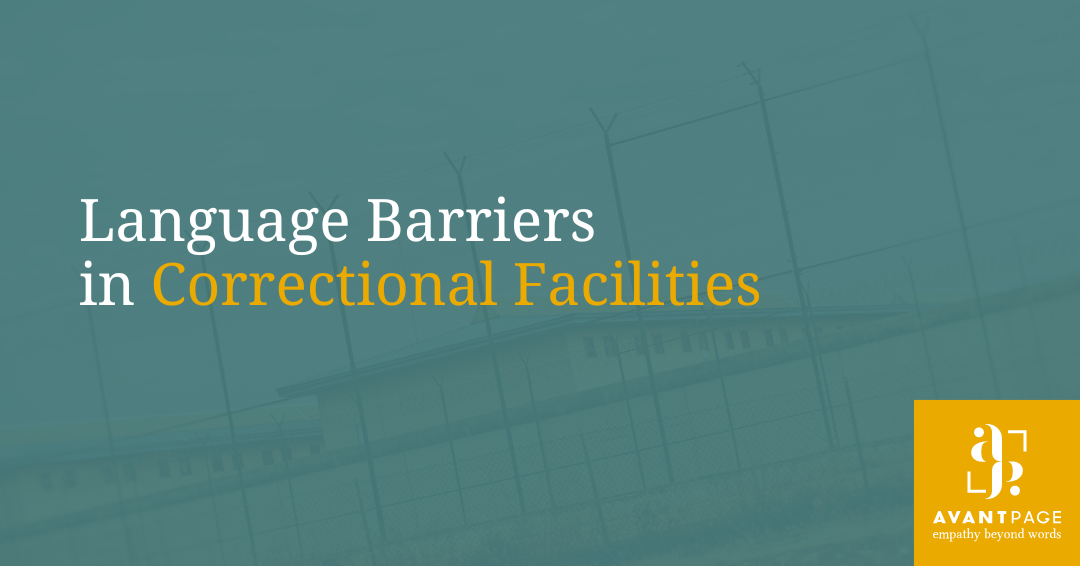In the United States, correctional facilities are legally required to provide language access to inmates with limited English proficiency (LEP). Still, many prisons have difficulty providing adequate, equitable language services, resulting in significant challenges for prisoners with LEP.
This can prevent inmates from participating in essential programs, have health implications, and isolate them from social interactions. Even worse, when prisoners are unable to communicate with other prisoners and prison staff, they also become vulnerable to mistreatment.
For example, a Salvadoran prisoner in Virginia was placed in solitary confinement for more than a decade — an injustice that occurred in large part due to his LEP. His only way out of solitary confinement was a program that was offered only in English, rendering it completely inaccessible to him. While it’s an extreme example, this program is just one of many that are practically impossible for prisoners with LEP to access — other, lower stakes services include libraries, academic programs, re-entry training, GED programs, and more.
In one of the country’s most linguistically diverse states, New York, 2,295 incarcerated individuals under custody or on parole were estimated to have LEP in the state Department of Corrections and Community Supervision’s 2022 language access plan — that’s about 3% of the state’s overall incarcerated population. Because they make up a fairly small portion of the incarcerated population, it can be easy to overlook this group of prisoners.
Additionally, a historical lack of transparency has made it difficult to gauge just how thorough language access in prisons actually is — much of the information available today is from 2021 onward, indicating that this topic is only recently coming to light.
Still, language access is a human right — it’s important to ensure that these individuals are able to navigate the justice system effectively and in their own language. In this blog post, we’ll take a look at some of the challenges that prisoners with LEP face in this country, and why it’s important to enact language access measures for this group of particularly vulnerable individuals.
Challenges to Providing Equitable Language Access in Prisons
There are several barriers that make it challenging for prisoners with LEP to access the services and programs that they need. Here are some of the biggest ones, and how they can negatively impact prisoners in the system.
Awareness of Prisoners’ Right to Language Access
Individuals with LEP often face significant barriers in understanding their rights — particularly their right to an attorney and an interpreter, at no cost to them. This misunderstanding begins in the booking stage, and can continue through their stay in prison.
Sometimes, a prisoner’s preferred language is misidentified, often due to the lack of trained staff or the individual’s reluctance to disclose their language out of fear from previous discrimination. The intimidating environment of a correctional facility — be it the presence of armed officers or threatening inmates — may exacerbate this issue.
Limited Access to Technology for Remote Interpreting
Correctional facilities enforce strict rules on technology use, limiting access to the internet and other tools that can be used to provide remote interpreting services. Many prisons lack the necessary technological infrastructure to support these services, further complicating efforts to ensure language access.
Without reliable access to video interpreters, LEP individuals may not be able to fully participate in essential activities such as legal consultations, medical appointments, and educational programs. This technological gap may prevent them from receiving necessary support and information, ultimately exacerbating the challenges they face within the correctional system.
Language Access Gaps for Languages Other than Spanish
Language access measures in correctional facilities predominantly focus on Spanish, which is by far the most commonly spoken language other than English in the US. While Spanish-speaking inmates may be able to rely on the word of other Spanish-speaking inmates, speakers of less common languages may be totally isolated.
This, combined with a lack of resources in non-Spanish languages, leaves significant gaps for speakers of other languages, who will face even greater challenges in accessing essential services and programs.
Ambiguous Laws on Grouping Individuals by Language
Grouping inmates by shared languages for ease of communication can foster socialization, reducing the extreme isolation that many LEP individuals face. However, the legality of this practice is somewhat murky, and as a result, some prison coordinators may not place emphasis on grouping LEP prisoners of the same languages together. This results in severe isolation, ultimately hindering rehabilitation efforts.
Ensuring that LEP inmates have opportunities to communicate and socialize with others who speak their language can mitigate these harmful effects and promote a healthier, more rehabilitative environment.
Summary
Prisoners with LEP are in a particularly unique situation when it comes to language access — although federal law requires prisons to comply with many of the same language access measures that other government agencies must, prisoners with LEP tend to fall through the cracks.
Language access measures in prison have a long way to go — here are a few of the barriers LEP prisoners face today:
- They’re often unaware of their rights regarding language access.
- Limited access to technology makes scheduling remote interpreting challenging.
- Language access efforts overwhelmingly focus on Spanish, leaving non-Spanish-speaking LEP prisoners in the dark.
- The law is somewhat murky when it comes to grouping individuals by language.
At Avantpage, we offer translation, interpreting, and language access planning services to government agencies across the country — if you’re looking to improve language access for LEP prisoners in your system, contact us today at [email protected] or (530) 750-2040.
